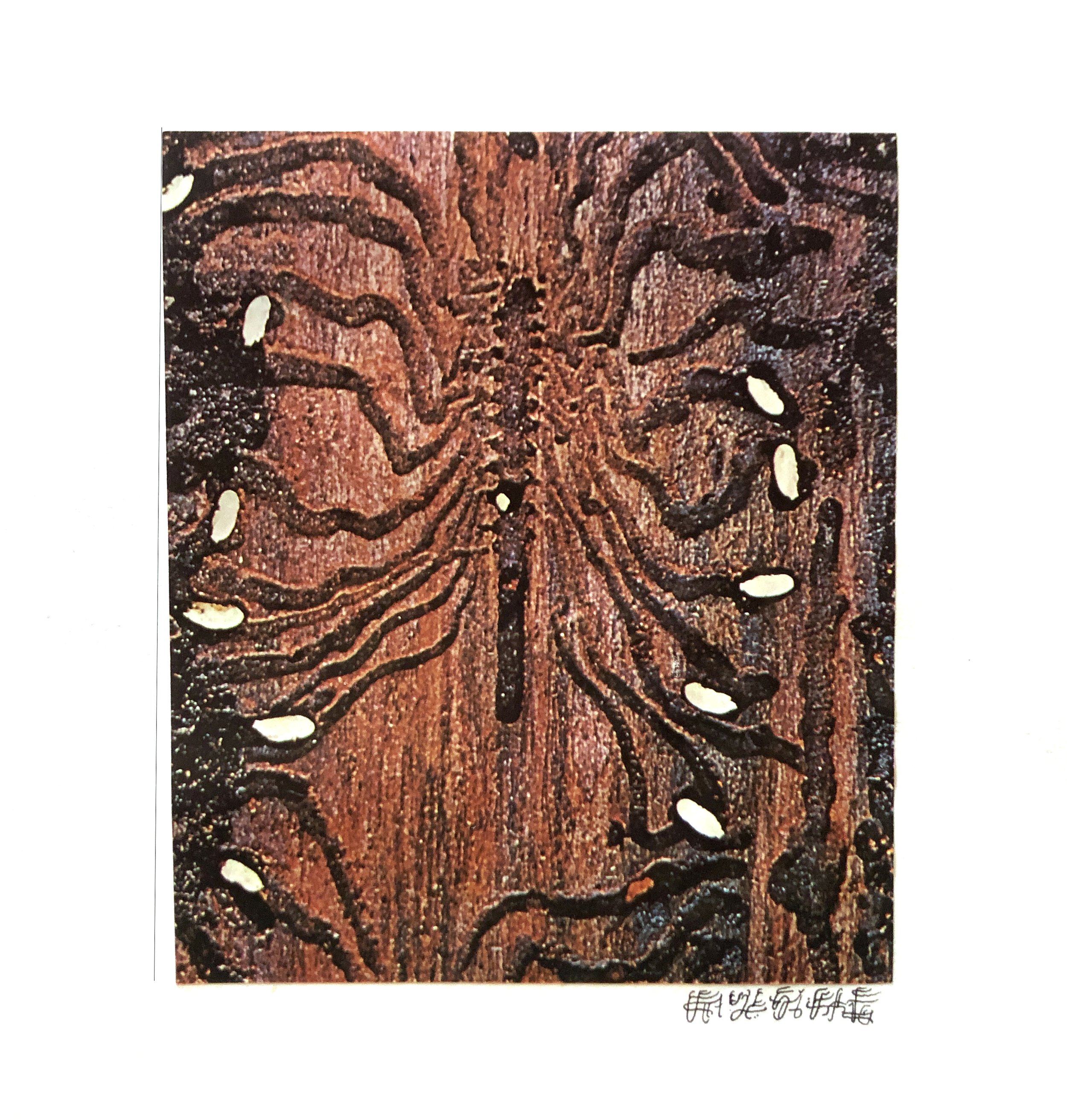A Note on
Asemics
by Christian Bang Jensen
In my work there are a few recurring themes, and one of them is asemic writing. For me, it suggests many things. It is a prism through which to think about meaning and lack of meaning. It has a lot of associations to horror and fantasy movies, where you often encounter an unknown language, usually in the form of a prop. These props contain asemic writing, even when they are intended primarily as visualizations. It all comes down to how you look at it. Perhaps this was my first introduction to asemic writing, however I began using it in my artistic practice after a experiencing series of altered states of consciousness. These signs from popular culture, or signs you might come across in a foreign land or spelling out an ancient tongue, can imbue my thoughts with an sense of mystery and the presence of an occult background noise.
a prism through which to think about meaning and lack of meaning
This leads me to another suggestion, which is how visual art is often surrounded by a very dense layer of language and of theory (sometimes less dense), and how one might experience some challenges when being asked to explain a visual work. I love words and language, but it can be demanding to always have to refer to language when you work in a visual field. These modes belong to different orders, somehow. Which is not in the case of asemic writing, where it can be hard to differentiate between writing and drawing. And so asemic writing becomes a way for me to mock, or to articulate a critique of, semantics in the art field. It allows me to suggest that – perhaps asemia is a more democratic language than art lingo?
a way for me to mock, or to articulate a critique of, semantics in the art field
I've tried to extend this approach in the sculptural part of my artistic practice by processing asemic documents through a computer, and then milling the shapes into wood. This is very different, both is a process and when it comes to the final result, since the signs are translated first by a computer program, and then by a milling tip. In this instance, the milling tip becomes a determining factor, playing the part of a writing tool.
a determining factor, playing the part of a writing tool
When I make the signs, it feels like the opposite of a reflection or contemplation; it is instead very much a “making” and a practice – sometimes a sort of meditation that requires a specific mind-body concentration. The signs I make are related to the tool I use: whether it is the tip on the end of my dip pen, or a different pen altogether. This extension of the body and the hand becomes part of the writing. Sometimes it seems like writing is not even the best word, as it is often more of a choreography of the hand. It is almost a dance, springing from my inner experience at the time.
almost a dance, springing from my inner experience at the time
About the work
All pieces are the result of a residency in Mexico City, March 2023.
About the artist
Christian Bang Jensen (b. 1983, in Fredrikshavn, Denmark) is a visual artist based in Copenhagen. He holds MFAs from The Funen Art Academy and Malmö Art Academy. His work has been exhibited in galleries, festivals and institutions across Denmark, Sweden, Italy and the UK, among others. In his work he deals with the act of collecting, and exploring the discourse of how knowledge is manufactured.






